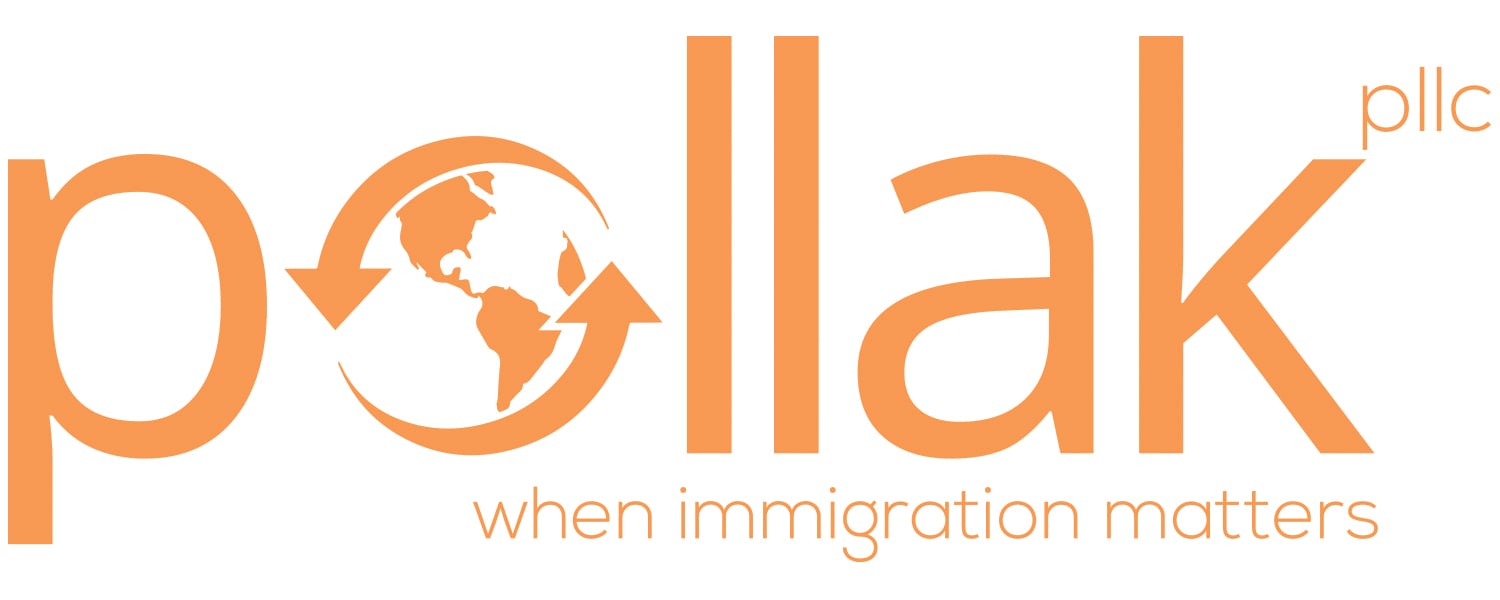For many foreign nationals seeking U.S. permanent residency through the EB-5 Immigrant Investor Program, meeting the investment threshold is the most immediate hurdle. Whether investing $800,000 in a Targeted Employment Area or $1.05 million in a standard location, sourcing this capital legally and transparently is critical.
In some cases, investors may rely entirely on personal savings or business proceeds. In others, they turn to financing options—especially loans—to bridge the gap. USCIS does permit the use of borrowed funds in EB-5 investments, but only when the loan is properly structured, fully documented, and lawfully sourced.
Using loans in this context requires careful legal analysis. Missteps can result in Requests for Evidence (RFEs), denials, or long delays. Understanding what USCIS expects from loan-based EB-5 filings—and how to comply—can mean the difference between approval and rejection.
How Pollak PLLC Helps Investors Use Loans Legally and Effectively
Financing an EB-5 investment with a loan is not inherently problematic. The challenge lies in the details—loan terms, collateral structure, paper trails, and consistency with USCIS guidelines. Pollak PLLC EB5 visa attorney offers legal clarity in an area that’s often misunderstood or oversimplified by consultants and investment brokers.
Documenting the Lawful Origin of Funds
Pollak PLLC ensures that every dollar used for the EB-5 investment—whether borrowed or owned—is properly documented. The firm helps clients prepare comprehensive source-of-funds documentation that meets USCIS expectations, including bank records, notarized loan agreements, and proof of collateral.
Anticipating USCIS Scrutiny
Loan structures that seem legitimate at face value may raise red flags if they are not backed by strong documentation. Pollak PLLC business immigration lawyer evaluates each loan for compliance with EB-5 requirements and prepares clients to explain the financial structure with clarity, transparency, and legal consistency.
Coordinating With Lenders and Financial Advisors
In many cases, the loan may originate from a family member, private bank, or personal line of credit. Pollak PLLC works with clients’ financial advisors and lenders to ensure that documentation reflects a legitimate, lawfully sourced, and enforceable debt arrangement that satisfies immigration standards.
Can Loans Be Used for EB-5 Investments?
Yes—USCIS permits the use of both secured and unsecured loans for EB-5 investments. However, not all loan arrangements will be accepted. The determining factor is whether the loan proceeds are personally attributable to the investor, sourced lawfully, and subject to repayment under reasonable and verifiable terms.
Understanding Investment Risk
The EB-5 program requires that invested capital be “at risk.” This means the investor must have a personal financial stake in the outcome. If a third party repays the loan or if there is no obligation to repay, USCIS may determine that the investor hasn’t truly assumed financial risk—rendering the petition invalid.
USCIS Guidance on Indebtedness
According to USCIS policy, an investor may use loan proceeds as long as they are primarily and personally liable for the debt and the loan is not secured by assets owned by the business receiving the EB-5 investment. Loans secured by personal property—such as a home, stock portfolio, or bank account—are generally permitted when well-documented.
Secured Loans: Requirements and Documentation
Secured loans are one of the most common ways investors fund EB-5 petitions. These may include home equity lines of credit, mortgages, or loans secured by other personal assets.
Evidence of Collateral
When using a secured loan, the investor must demonstrate ownership of the collateral and provide documentation proving the asset was acquired lawfully. This often includes purchase contracts, mortgage statements, property deeds, and tax returns.
Clear Loan Terms
The loan agreement itself must be formal, signed by both parties, and contain clear repayment terms. USCIS expects details such as interest rates, payment schedules, and conditions of default. Informal or vaguely drafted loan agreements are more likely to prompt RFEs.
Appraisals and Valuation Documents
For real estate-secured loans, a formal property appraisal is often necessary. USCIS must be satisfied that the collateral had sufficient value at the time the loan was taken and that the funds came from the investor—not from the project or any interested third party.
Unsecured Loans and Gifting Structures
Unsecured personal loans are allowed under EB-5 rules, but they must be supported by strong documentation that proves the investor has the means and intent to repay the debt.
Personal Loans From Friends or Family
Loans from family members or friends are permissible but must be genuine. This means the investor must show both the loan agreement and evidence that the lender had lawful means to provide the funds. Without proof of the lender’s financial capacity, USCIS may question the legitimacy of the transaction.
Gifted Funds and Affidavits
Gifts are also acceptable in EB-5 petitions if the donor provides a formal affidavit stating that the funds are non-repayable. As with loans, the giftor’s source of funds must be lawful and verifiable. Pollak PLLC helps draft affidavits that reflect USCIS standards and works with donors to gather necessary financial documentation.
Tracing and Verifying Source of Funds
Loan proceeds are only acceptable in EB-5 filings when both the loan and the funds used to secure it can be traced to lawful sources. This requires detailed documentation and logical flow of financial transactions.
Building the Paper Trail
USCIS expects a complete timeline showing where the funds originated, how they moved between accounts, and when they were used for the EB-5 investment. This includes wire receipts, bank statements, tax returns, and other supporting evidence.
Translations and Currency Conversions
Foreign-language financial records must be translated by certified professionals. Foreign currency must be converted into U.S. dollars using consistent, government-recognized exchange rates. Pollak PLLC ensures these technical details are accurate and complete—removing common obstacles to petition approval.
Structuring the Loan to Minimize Risk
Poorly structured loans are one of the leading causes of EB-5 denials. Even if the funds are lawful, improper repayment terms or collateral tied to the investment project can result in rejection.
Avoiding Prohibited Collateral
Loans secured by the enterprise receiving the EB-5 investment are not permitted. For example, you cannot take out a loan using EB-5 project shares as collateral. This would negate the “at risk” requirement, as the investor is no longer putting their own capital on the line.
Addressing Third-Party Guarantees
USCIS scrutinizes any indication that the investor isn’t personally liable for the loan. If the debt is guaranteed by another party—or if repayment depends on the project’s performance—the agency may determine that the capital was not truly invested. Pollak PLLC helps identify and correct these red flags before filing.
Loan Repayment During the EB-5 Process
Repaying a loan too early can cause problems with USCIS, particularly during the two-year conditional residency period. USCIS requires that the investment capital remain “at risk” throughout this phase.
Conditional Residency and Investment Duration
Investors must retain their capital in the new commercial enterprise until the conditions on their green card are removed via Form I-829. If the investor repays the loan prematurely and then exits the enterprise, USCIS may conclude that the capital was not sufficiently committed.
Showing Sustained Investment
Even after the investment funds are deployed, documentation must demonstrate that the funds remained in active use by the business. This may include profit-and-loss statements, reinvestment records, or other evidence that capital was not withdrawn or returned too soon.
Common Mistakes to Avoid With Loan-Based EB-5 Petitions
Using a loan is legal—but it must be done correctly. Many applicants unknowingly create issues that can derail their petition, often after months of preparation.
Failing to Document the Loan Origin
Even when the loan is secured, applicants sometimes neglect to provide full documentation of how the collateral was acquired or omit critical pieces like mortgage statements or payment ledgers. These gaps can lead to RFEs or denials.
Relying on Questionable Lenders
USCIS may question loans that come from obscure institutions, unverifiable lenders, or parties with a stake in the EB-5 enterprise. Pollak PLLC vets each loan for legitimacy and advises against arrangements that may raise compliance concerns.
Using Business Loans With Tied Interests
Business loans that are directly connected to the EB-5 project—or are collateralized by the business itself—can disqualify the investment. Pollak PLLC helps clients avoid this mistake by isolating personal liability from project financing.
Your EB-5 Investment Starts With Legal Precision
Choosing to fund an EB-5 investment with a loan is entirely possible under U.S. immigration law—but success depends on the structure, documentation, and timing of that decision. Every financial step must be transparent, verifiable, and in line with USCIS policy.
Pollak PLLC immigration law firm has guided investors through complex loan-based EB-5 filings for more than two decades. The firm helps clients evaluate funding sources, prepare complete documentation, and avoid the errors that most often result in denials or delays.
To begin preparing your EB-5 petition with confidence, contact Pollak PLLC online today to schedule a confidential consultation. Legal services are available in English, Spanish, and other languages by request.
Pollak PLLC is an award-winning immigration law firm with offices in Dallas, Texas, and Fort Lauderdale, Florida. Contact us at info@pollakimmigration.com or call 214-307-5510 today to schedule a consultation to discuss your options. You can also see updated information on our Pollak PLLC Facebook page.




